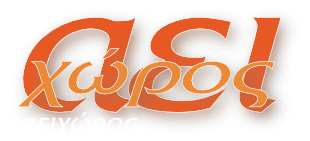Urban landscape, place identity and their components: a new software tool for supporting the sustainable urban planning and design
DOI :
https://doi.org/10.26253/heal.uth.ojs.aei.2007.173Mots-clés :
Urban landscape, Place identity, Sensitive relief, Multimedia software for thematic mapping, Sustainable urban planningRésumé
The new structure of the contemporary city is unpredictable and complex, especially given the continuous mix of cultures which brings new elements to the already multiple identity of places, breaking, mixing and recomposing the complexity of urban life. In order to explain such new sites and give new terms, several researchers have tested new methodologies, maps, multimedia images, hypertext, software, able to render this complexity and to permit readability. One matter remains open-ended: the dialogue of these tools with administrators and planners, but also with non-specialists of those sectors, common users of the place, inhabitants, because of the difficulties finding a single shared model of representation. The method of analysis of the Sensitive Relief identifies the elements of the urban landscape which have value for the identification of the places and are able to influence the cultural and sustainable city construction; those new elements and the complexity of those places are represented in a complex map. Starting from those premises, the aim of this work, carried out in the framework of a Convention between Consiglio Nazionale delle Ricerche and Dipartimento di Progettazione Urbana, Università di Napoli Federico II, is to investigate on the possibility to create a PlaceMaker, a suitable software to connect and communicate the complex information contained in the complex map and give value and significance to those data. The Sensitive Relief assembles, elaborates and reconstructs the data deriving from surveys based on physical reconnaissance, sensory perceptions, graphical elaboration, photographic and video records, and sets this data against that provided by an overview of expectations, an analysis based on traditional cartography and a questionnaire given to local inhabitants. Furthermore, to make the PlaceMaker more accessible to specialist and non-specialists in the field, aim of this work is to comprehend how to visually represent the data to make them become flexible and interactive work tools and to support the sustainable city construction and transformation.
Téléchargements
Téléchargements
Publiée
Comment citer
Numéro
Rubrique
Licence

Ce travail est disponible sous licence Creative Commons Attribution - Pas d’Utilisation Commerciale 4.0 International.

